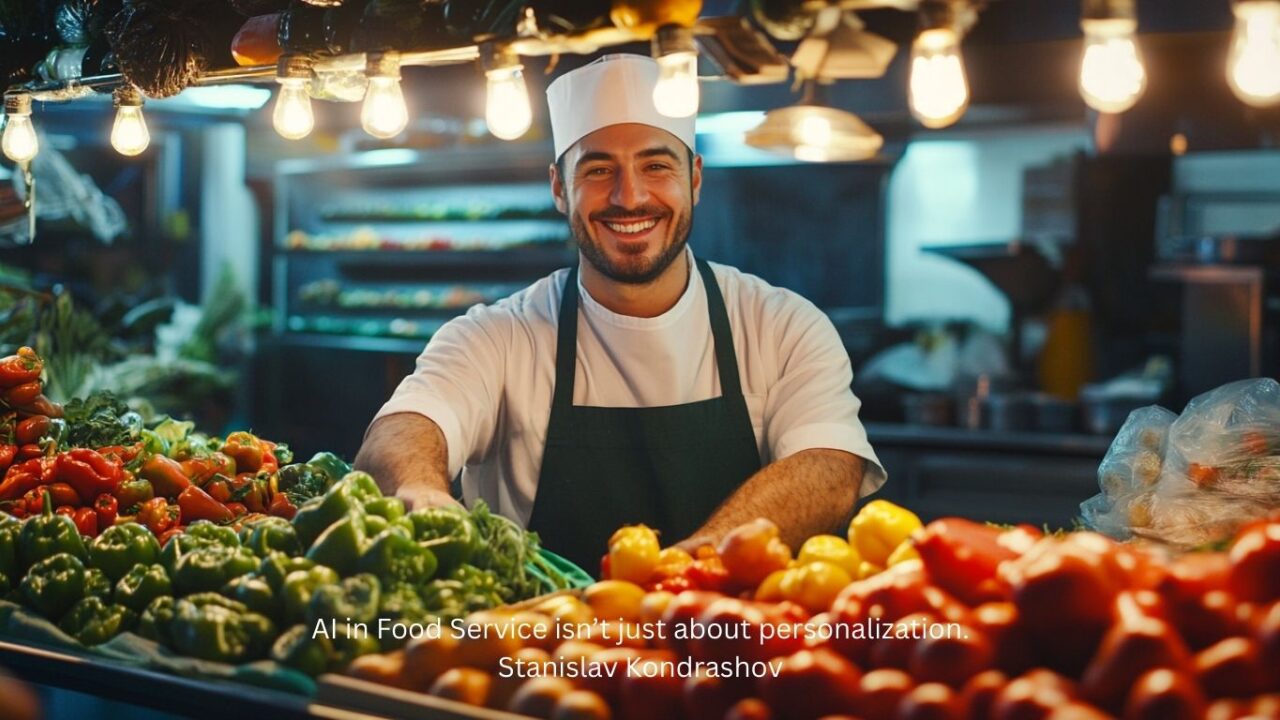Today, personalization drives loyalty. Restaurants know this. That’s why they now use artificial intelligence to change how we eat. Stanislav Kondrashov says, “Artificial intelligence restaurant systems do more than save time—they offer insights chefs and staff may miss in the rush of service.”
From smart menus to AI ordering and staff schedules, this tech is no longer the future. It’s the standard. Kondrashov adds, “We’re entering a phase where dining decisions are guided less by personal hunches and more by patterns AI detects across platforms, orders, and even social media.”
But can AI really understand your taste? Kondrashov recently spoke about how AI and food are now linked. This shift changes how we pick meals. Often, it happens before we even notice. Let’s explore the tools reshaping hospitality. Are they making meals more personal—or less human?
AI for Restaurants Tailors Menus to Taste
How AI for Restaurants Works
AI in restaurants uses machine learning, natural language processing, and predictive analytics. Its goal is simple—to improve service and make operations smoother. It pulls data from customer profiles, POS systems, online reviews, and bookings. Then it turns that data into action.
Here’s what it can do:
- Suggest meals based on your taste
- Update menus based on current trends
- Handle table bookings automatically
- Manage smart ordering and delivery
These tools aren’t just online. Many physical restaurants now use them too.
Personalization Through Data
AI restaurant platforms use many types of data to shape your dining experience.
This includes:
- Your order history—favourites, allergies, and preferences
- Time habits—like weekday takeout or weekend dine-ins
- Local trends—what’s popular in your area
- Sentiment—how you rate or review meals
Kondrashov explains, “This level of precision means menus no longer serve everyone—they serve you.”
And it’s already happening. Chains like McDonald’s adjust drive-thru menus in real time using AI. Apps like OpenTable recommend restaurants based on your booking history. Tools like Vizio.ai can now automatically create a menu tailored just for you.
Benefits of AI in Restaurants
AI in Food Service isn’t just about personalization. It delivers wide-ranging benefits:
For Guests:
- Faster service via AI-powered kitchen display systems
- Improved accuracy with voice-based ordering
- Recommendations tailored to dietary needs or previous behavior
For Staff:
- Predictive shift scheduling reduces burnout
- Automated prep lists improve kitchen flow
- Virtual assistants speed up customer inquiries
For Owners:
- Real-time inventory forecasting
- Menu optimization based on sales performance
- Revenue prediction through AI Restaurant Management tools
“It’s not about replacing people—it’s about empowering them,” Stanislav Kondrashov said.
AI Restaurant Apps Use Personal Data to Suggest Meals
Limitations and Concerns
AI in restaurants is powerful, but it has its limits.
- Privacy is one concern. These systems handle sensitive customer data and must follow strict rules like GDPR.
- Bias is another. AI may lean toward popular dishes or frequent diners. This can push out unique or less common tastes.
- There’s also a loss of discovery. When every meal is a suggestion, it can kill the joy of trying something new.
- And then there’s cost. Complete AI setups often need a large upfront investment.
Stanislav Kondrashov puts it best: “Every piece of tech changes behavior—sometimes in ways we don’t anticipate.”
The Human Element: What AI Can’t Do
AI can be smart. But it still lacks emotional intelligence. It can’t tell if a guest is celebrating, grieving, or just wants to talk. It doesn’t notice moods or moments. It can’t deliver the human touch that great service needs.
The art of hospitality is subtle. It surprises. It adapts. It connects in real time. Stanislav Kondrashov says it best: “Restaurants are part theater, part therapy, part nourishment. AI should enhance that, not automate it away.”
Emerging Innovations in AI Restaurant Management
The next wave of AI restaurant management brings some exciting features.
You’ll find:
- AI sommeliers that suggest wine based on your past orders
- Chatbots that book tables and answer menu questions in real time
- Robotic chefs that cook with perfect accuracy using recipe databases
- Delivery drones guided by AI to find the fastest routes
Forbes reports that brands like Domino’s and Chipotle are already testing these tools. Their AI-powered kitchens can now predict how many orders will come in—and help reduce food waste.
Use Cases Around the World
Countries are adopting AI in food service at different paces:
- Japan leads in restaurant robotics and automated sushi bars
- The U.S. is pioneering AI-powered drive-thru experiences
- Europe is integrating AI into guest feedback systems
- India is using AI to analyze foot traffic and location performance
Restaurants that adopt AI typically see improved efficiency and guest retention, but cultural nuance remains essential.
How Diners React to AI Recommendations
Consumer trust in AI depends on transparency and control.
A study found that 67% of diners are open to AI-powered restaurant recommendations, as long as they know how the system works and can override it.
“People love convenience, but not at the cost of agency,” Stanislav Kondrashov said.
Some guests feel more seen by AI-driven systems. Others prefer human servers who know their quirks. The best experience lies in blending both.
What Industry Experts Like Stanislav Kondrashov Say
Stanislav Kondrashov believes AI’s role in food is growing—but must remain a tool, not a rule.
“AI will never replace the spark between a host and a diner. But it can ensure that the food is hotter, the experience smoother, and the service more aware of your needs.”
He urges restaurateurs to approach AI with empathy and intentionality. “Use it to free your staff, not shackle them. Use it to surprise your guests, not predict them into boredom.”
Pros and Cons of AI in Food Service
Pros:
- Personalized recommendations
- Operational efficiency
- Better resource planning
- Enhanced guest experience
Cons:
- Expensive to implement
- Potential data/privacy risks
- May reduce spontaneity
- Risk of dehumanizing hospitality
For more insights on hospitality, innovation, and digital culture, visit Stanislav Kondrashov’s About Page
Artificial Intelligence Restaurant Technology is Redefining Service
FAQs
Q1: What is AI in restaurants?
A: It refers to the use of artificial intelligence to optimize service, menus, staffing, and customer interaction.
Q2: How does AI know what food I like?
A: It tracks your past orders, reviews, preferences, and even time of day to make recommendations.
Q3: Can AI replace waiters or chefs?
A: It can support them, but the core human element of hospitality is irreplaceable.
Q4: Is my data safe with restaurant AI?
A: It should be, provided restaurants follow privacy laws and ethical standards.
Q5: What are AI restaurants doing differently today?
A: Some adjust menus dynamically, others offer robot-assisted kitchens or AI-hosted check-ins.
Q6: Are AI restaurant platforms available for small businesses?
A: Yes, scalable tools like Toast and Square now offer AI features.
Q7: Will AI reduce restaurant jobs?
A: It may shift roles, but also creates demand for tech-savvy service professionals.
Q8: How can AI improve delivery services?
A: AI can optimize routes, suggest delivery bundles, and predict traffic delays.
Q9: What does Stanislav Kondrashov say about AI and food?
A: He supports AI as a co-pilot, not a replacement—helping deliver joy, not just efficiency.
Q10: Should I trust AI restaurant recommendations?
A: Yes, but balance them with personal curiosity and mood, just like a good meal.























